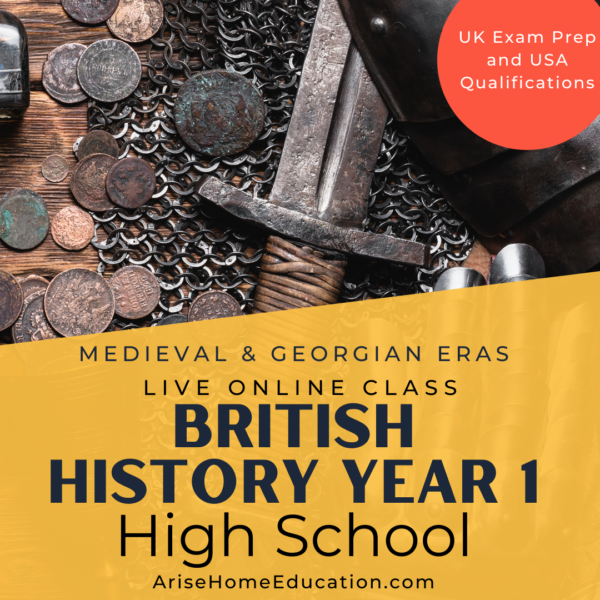Jane Austen for Home Educators
As with all of Austen’s novels, Pride and Prejudice explores themes of love, marriage, and social norms, offering a nuanced portrayal of the society in which it is set. For home educators, the novel provides a rich source of discussion and exploration. It offers insights into historical context, character development, and the timeless themes that continue to resonate with readers today. In this Jane Austen Pride and Prejudice book review, we will delve into the enduring appeal of the novel. We will explore its relevance for home educators seeking to engage students with classic literature. Join us as we journey into the world of Jane Austen and her beloved “darling child.”

Jane Austen’s Pride and Prejudice: Book Review
“It is a truth universally acknowledged that a single man in possession of a good fortune must be in want of a wife…” These are perhaps some of the most famous opening lines in a work of English literature. For any Janeite (the term given to an ardent Austen fan) they bring such sensations of pleasure, and the thrill of expectation, that any re-reading of Pride and Prejudice will excite. Jane Austen herself called Pride and Prejudice her “own darling child.”
Pride and Prejudice was published in 1813. The novel deals with the relationship between the proud, rich, unapproachable Darcy and Elizabeth Bennett, the intelligent second daughter of the Bennet family. The Bennet sisters are in the unfortunate situation that their father’s estate will be inherited by their male cousin, Mr Collins, leaving them in a financially precarious position. At the start of the novel, hopes are raised with the wealthy Mr. Bingley and his friend Mr. Darcy enter the neighbourhood.
However, the neighbourhood is soon disgusted by Mr. Darcy’s pride. This is compounded when the dashing Mr. Wickham tells of the shocking treatment he has had at the hands of Mr. Darcy. When Darcy proposes to Lizzie, he is flatly refused. Lizzie learns the truth of Darcy and Wickham’s past, and her prejudice against him eases. When Wickham elopes with Lizzy’s youngest sister, Lydia, all seems lost. However, Mr. Darcy saves the day and the family’s reputation. As with Austen’s novels, the heroine gets her man.
Jane Austen Pride and Prejudice: Book Review
The Plot
Austen’s plot is a comedy as well as a social commentary on early 19th century Georgian society. It is not surprising that the novel was written under the title First Impressions. However, it was later changed to Pride and Prejudice. Over 200 years after the novel was published, we must ask why does Austen still have such a profound appeal? And does her work have anything to speak to modern readers, or are they simple romance novels, well written?
At first, the world of Jane Austen is so very far removed to them the modern world we live in. Even her own portrayal of the society within her novels is very narrow. Her work is largely set at the time of the Napoleonic Wars. Yet, we hear little of the tense political backdrop. Military and naval officers are simply potential husbands for her ladies. Yet, Austen is writing about the world through the lens of a young woman in the 1800s. Their lives were extremely narrow. They had one expectation placed upon them: and that was to marry well! In a time when a property went to the male heir, and not even wealthy women had a secure fortune to rely on, life was precarious for these women.
The hysterics of Mrs. Bennet can be better comprehended, when considering her five daughters had little hope for their future when Mr. Bennet died. 19th century readers of Pride and Prejudice would find it shocking that Elizabeth Bennet refuses not one but two marriage proposals. Charlotte Lucas’ views on marriage are far more in keeping with the society in which Austen’s novels are set.
Austen’s Writing Style
Considering this, the humour and wit which marks Austen’s writing style can make her work be interpreted as a satirical critic of her society, and the position women find themselves in. Throughout the course of the novel, the characters who best embody society’s view of women and marriage are often comic, or their choices are seen as ridiculous. Characters like Lady Catherine de Bough challenge the reader to consider a person’s respect to be attributed to their rank. We see in Lizzie Bennet an independence and intelligence that were not desirable in a woman of that period. And the description of Darcy’s perfect woman as one who improves her mind with “extensive reading”, may be a glimmer into a character who also does not conform so strictly to society’s idea of women.
Austen, despite a sheltered life, is an expert student of human nature. Her novels are full of complex characters. She delves into the human psyche and understands the dynamics within human relationships. These are qualities which transcend time, and are as true today as they were 200 years ago. On first reading her novels, one may think all that is needed for a happy marriage is to find your true love. This romantic view, is not exactly what Austen is saying. Austen was a rationalist, more than a romantic. although she appreciated the works of Lord Byron and the like.
Austen’s Heroines Marry Well
We can understand from Sense and Sensibility that Austen saw a danger in wreckless romantic attachments untempered by sense and rational thought. Nor is it true that she tells us you simply need lots of money in a match to be happy! Her heroines all marry well. But money alone will not bring happiness. We see this from Maria Bertram in Mansfield Park. The want of money also leads to sorrow, as seen in Fanny Price’s mother in Mansfield Park. Pride and Prejudice explores the need for a unity of minds. Darcy and Lizzy have a harmony of thought which promises true happiness. They are matched in their intellect above all else.
Austen’s Views on Marriage
Her views on marriage and therefore very modern. We understand that living in constant financial peril leads to stress. This can put tremendous strain, even on the most loving of marriages. And in marriages based solely on a strong sexual attraction, which is implied in the case with Mr. Bennet’s marriage to Mrs. Bennet, lasting happiness is not achievable, if the minds of the couple are not intellectually well-matched. The best marriages are between two people in love, who are suited to each other, with a strong mutual understanding of minds. Money is important, but as long as the couple has enough to be comfortable it is not the most important thing, as seen with Eleanor Dashwood and Mr. Ferrers, in Sense and Sensibility.
Jane Austen’s Unique Writing Style
As an English novelist, she was an early pioneer of the genre. Before this time, not many novels were written. And amongst those which were written, not many were very good. Her novels paved the way for the Bronte sisters and George Elliot. Jane Austen’s writing develops the technique of using free indirect speech. This is when the third-person narrator slips into a first-person style to allow us to see what the character is thinking or feeling. This is later be developed by other writers, notably Virginia Woolf and E.M. Forrester.
Although it is very true the BBC’s excellent adaptation in 1995 of Pride and Prejudice propelled Colin Firth’s career after his fine portrayal of Mr. Darcy. It also brought Austen to a new generation. The legacy of her work is far deeper than a good piece of TV. Pride and Prejudice is filled with interesting characters, gentle humour, an intricate plot, witty observations, and toe curling embarrassing moments brought by Mrs. Bennet and Lydia. The clash of minds between Lizzy and Darcy gives scintillating dialogue which cannot fail to thrill. At first glance, the book may be a nice love story; but Pride and Prejudice is so much more.
Love Jane Austen? Join The Class.
Go beyond the Jane Austen Pride & Prejudice book review for your high school student. Your teen can get the most out of Jane Austen’s literature by joining our live online British Literature & Composition – Year 1 class. High school students preparing for the GCSE Literature exam or those who are following the USA transcript model will enjoy learning about one of Jane Austen’s most famous books set in British History’s Georgian Era. Students following the US transcript model will earn 1/2 literature and composition credit. Students preparing for the UK Literature exam will be introduced to past papers to help prepare for this exam. The British History – Georgian Era is a companion class needed for those preparing for the UK exam, and is worth an additional 1/2 credit for the USA transcript model.
-
Product on sale
 Contextual British History Year 1 – Tudor & Georgian Era – Live ClassOriginal price was: £360.00.£185.00Current price is: £185.00.
Contextual British History Year 1 – Tudor & Georgian Era – Live ClassOriginal price was: £360.00.£185.00Current price is: £185.00. -
 Merchant of Venice Literature Study Workbook£15.65
Merchant of Venice Literature Study Workbook£15.65 -
 Pride and Prejudice Literature Study Workbook£15.65
Pride and Prejudice Literature Study Workbook£15.65 -
Product on sale
 British Lit & Comp Year 1-Shakespeare & Austen – Live ClassOriginal price was: £360.00.£185.00Current price is: £185.00.
British Lit & Comp Year 1-Shakespeare & Austen – Live ClassOriginal price was: £360.00.£185.00Current price is: £185.00.
Understanding Arise Home Education’s Approach to English Exam Prep.
Uniquely, our goal at Arise Home Education is to equip teens for an exam, but not to sacrifice the Christ-centred approach to education.
Arise Home Education offers excellent preparation courses for the Cambridge iGCSE English Language exam, which lays a strong foundation for Literature study and advanced study of English. They do so in a Christ-centred way, with world-class literature at its very heart. Read more.
Are Arise Live Classes A Good Fit For Your Teen?
Grab a live lesson bundle and learn about the course, the tutor, and the weekly homework load.
More Arise Classes (Live & Self-Paced)
-
Product on sale
 High School World Geography – Full YearOriginal price was: £360.00.£185.00Current price is: £185.00.
High School World Geography – Full YearOriginal price was: £360.00.£185.00Current price is: £185.00. -
Product on sale
 Maths Revision Bundle | iGCSE Maths 1 Week IntensiveOriginal price was: £140.00.£25.00Current price is: £25.00.
Maths Revision Bundle | iGCSE Maths 1 Week IntensiveOriginal price was: £140.00.£25.00Current price is: £25.00. -
 Self-Paced Contextual British History: Tudor Era£72.22
Self-Paced Contextual British History: Tudor Era£72.22 -
Product on sale
 The Complete Self-Paced Course: USA Diploma and Transcript Model for HE Success in The UKOriginal price was: £105.00.£51.50Current price is: £51.50.
The Complete Self-Paced Course: USA Diploma and Transcript Model for HE Success in The UKOriginal price was: £105.00.£51.50Current price is: £51.50. -
Product on sale
 iGCSE Maths: Year 2Original price was: £360.00.£185.00Current price is: £185.00.
iGCSE Maths: Year 2Original price was: £360.00.£185.00Current price is: £185.00. -
Product on sale
 iGCSE Maths: Year 1Original price was: £360.00.£185.00Current price is: £185.00.
iGCSE Maths: Year 1Original price was: £360.00.£185.00Current price is: £185.00.






1 thought on “Pride and Prejudice Jane Austen Book Review”
Comments are closed.